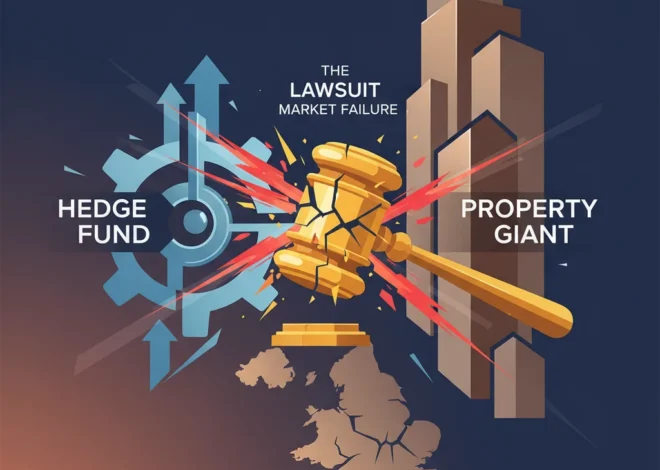
Beyond the Impasse: The Lasting Economic Scars of the Longest U.S. Government Shutdown
The End of the Standoff: A Temporary Reprieve with Long-Term Consequences
In early 2019, the United States emerged from its longest-ever government shutdown, a 35-day political impasse that reverberated far beyond the walls of Washington D.C. While the signing of a short-term spending bill by then-President Trump brought immediate relief to 800,000 furloughed federal workers, the event left an indelible mark on the U.S. economy, investor confidence, and the very machinery of our financial system. This wasn’t merely a political headline; it was a multi-billion dollar economic event that offered critical lessons for investors, business leaders, and anyone involved in the world of finance and economics.
The shutdown, which stretched from December 22, 2018, to January 25, 2019, was ostensibly a dispute over funding for a southern border wall. However, its impact cascaded through nearly every sector of the economy. It halted essential government services, delayed critical economic data, and introduced a potent dose of uncertainty into the stock market. To truly understand its significance, we must dissect the financial fallout and explore the deeper implications for investing, banking, and the future of financial technology.
Quantifying the Damage: The Tangible Cost to the U.S. Economy
Political gridlock comes with a hefty price tag. The Congressional Budget Office (CBO), a non-partisan federal agency, provided a clinical assessment of the economic damage. Their analysis revealed that the five-week shutdown had a direct and measurable negative impact on the country’s economic output. The CBO estimated that the impasse reduced the real GDP in the first quarter of 2019 by a staggering $8 billion, with a permanent loss of approximately $3 billion that would never be recovered.
This economic drag stemmed from several factors:
- Lost Productivity: Furloughed federal workers were not contributing to the economy, and even essential employees working without pay faced immense financial and personal stress, likely impacting their productivity.
- Reduced Government Spending: Federal agencies ceased purchases of goods and services, creating a ripple effect that hit government contractors and their supply chains hard.
– Delayed Services: Critical functions were put on hold. The Securities and Exchange Commission (SEC), for example, largely shut down its processing of IPO filings, effectively freezing a key component of the capital markets. This had a direct impact on companies planning to enter the stock market.
The broader, indirect costs were even more pervasive. Consumer confidence, a vital pillar of the U.S. economy, took a significant hit. The Conference Board’s Consumer Confidence Index saw a sharp decline in January 2019, as households grew anxious about the stability of the economy and their own financial futures. This uncertainty translated directly into reduced consumer spending, impacting retailers, restaurants, and service providers, particularly in areas with a high concentration of federal employees.
To put the direct economic impact into perspective, the CBO’s analysis provides a clear breakdown of the shutdown’s effect on quarterly GDP growth.
| Time Period | Estimated Impact on Real GDP | Key Contributing Factors |
|---|---|---|
| Fourth Quarter 2018 | -$3 billion (0.1% reduction) | Initial loss of federal worker compensation and reduced government purchases. |
| First Quarter 2019 | -$8 billion (0.2% reduction) | Prolonged shutdown, delayed federal spending, and significant drop in demand from affected households and businesses. |
| Permanent Loss | -$3 billion | Lost economic activity that could not be made up after the government reopened. |
This data illustrates that a political stalemate is not a cost-free exercise. It acts as a direct brake on economic growth, with consequences that linger long after the immediate crisis has passed.
The End of Free Rides: Why the UK is Gearing Up for Pay-Per-Mile EV Charging
Market Volatility and the Investor’s Dilemma
The stock market, an ever-sensitive barometer of economic health and political stability, reacted with predictable anxiety. While the market didn’t collapse, the shutdown contributed to a climate of heightened volatility. Investors and trading algorithms alike had to contend with an environment where key decision-making inputs were suddenly unavailable. The Bureau of Economic Analysis and the Census Bureau, for instance, delayed the release of critical reports on GDP, inflation, and retail sales. For an investment world built on data, this was akin to flying blind.
This information vacuum forced a shift in trading strategies. Quantitative funds that rely on economic data models were at a disadvantage, while traders had to place a greater emphasis on qualitative factors, corporate earnings reports, and geopolitical news. The shutdown served as a stark reminder that political risk is not an abstract concept but a tangible market-moving force. It underscored the importance of portfolio diversification and hedging strategies designed to mitigate the impact of sudden, politically-driven shocks to the economy.
The Hidden Impact on Banking, Fintech, and Financial Plumbing
While the headlines focused on federal workers and GDP, the shutdown’s tremors were felt deep within the financial system’s plumbing.
The banking sector faced a unique set of challenges. With hundreds of thousands of federal employees and contractors missing paychecks, concerns grew over their ability to meet mortgage, auto loan, and credit card payments. Banks and credit unions, particularly those near federal employment hubs, had to quickly implement forbearance programs and short-term loans to prevent a wave of defaults. Furthermore, government agencies like the Federal Housing Administration (FHA) and the Internal Revenue Service (IRS) experienced significant slowdowns. This delayed the processing of government-backed mortgages and the verification of income for loan applications, creating a bottleneck in the real estate market (source).
Interestingly, this period of distress highlighted the evolving role of financial technology. While traditional banks scrambled, some fintech platforms saw an opportunity. Peer-to-peer lending services and short-term loan applications became a lifeline for some struggling households. This event acted as a real-world stress test, revealing both the potential of fintech to provide rapid, accessible financial solutions and the regulatory questions that arise when non-traditional lenders step into a crisis. Grounded: How a Government Shutdown Clips the Wings of the US Economy and Your Portfolio
From a speculative, forward-looking perspective, the shutdown also sparks conversations around more resilient systems. Could blockchain and smart contract technology offer a future where essential government payments are automated and executed on a decentralized ledger, insulated from political stalemates? While a far-off concept, the 2019 shutdown forces us to imagine a financial technology infrastructure that is inherently more robust and less susceptible to the vagaries of partisan politics.
Lessons for the Future: Pricing in Political Disruption
The end of the 2019 government shutdown was more than just a return to normalcy; it was a watershed moment that provided invaluable lessons for anyone engaged in finance, investing, or business leadership.
- Political Risk is Economic Risk: The most crucial takeaway is that political dysfunction has a direct, quantifiable, and negative impact on the economy. It is no longer a peripheral concern but a central variable in any comprehensive economic or market analysis.
- Data Dependency is a Vulnerability: The modern financial system is profoundly dependent on a steady stream of government-provided economic data. The shutdown exposed this vulnerability, highlighting the need for alternative data sources and models that can function in an information-scarce environment.
- Resilience is Key: For businesses, the shutdown emphasized the importance of having contingency plans and sufficient cash reserves to weather unexpected disruptions in government services or consumer demand. For investors, it reinforced the timeless wisdom of diversification and risk management.
As we navigate an increasingly complex global economy, the memory of the 2019 shutdown serves as a powerful case study. It reminds us that the stability of our financial markets and the health of our economy are intrinsically linked to the functional integrity of our government. For those in finance, understanding this connection is no longer optional—it is essential for successful navigation of the challenges and opportunities that lie ahead.


